Note: In October, Books We Read is publishing a series of blog posts throughout the month to help promote and honor Disability Awareness Month.
The modern Olympics (which date back to 1896) celebrate athletes from countries all over the world and foster sportsmanship and teamwork. These are exceptional athletes – the top in their sport. And this year’s 2024 Paris Olympics was no exception – with fabulous venues and nail-biting games, races and competitions, it was an exciting and entertaining two weeks.
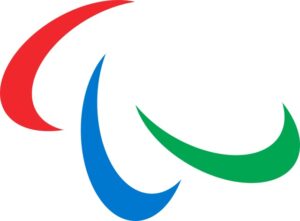
All of this enthusiasm bubbled over into the Paralympics – held in the same places throughout Paris with likewise talented, extraordinary competitors. As a little bit of history, sporting events for athletes with an impairment has existed for over one hundred years. However, it wasn’t widely introduced or supported until after World War II, prompted by the large number of war veterans and civilians who had been injured during the war.
When the 1948 Olympic Games opened in London, sixteen injured servicemen and women participated in an archery competition for wheelchair athletes. Called the Stoke Mandeville Games at the time, it later became the Paralympic Games, which first took place in Rome, Italy, in 1960 featuring four hundred athletes from twenty-three countries. Since then, they have taken place every four years. The Paralympic Winter Games have been held since 1976, and as with the Summer Games, have taken place every four years, including a Paralympics Opening Ceremony and Paralympics Closing Ceremony. Since the Seoul, Korea Summer Games in 1988 and the Winter Games in Albertville, France in 1992, the Paralympics have been held in the same cities and venues as the Olympics.

The Special Olympics are equally exciting and important, but with a slightly different history and focus. The brainchild of Eunice Kennedy Shriver, the Special Olympics have their origins in the 1950s and early 1960s, when Shriver noticed how unfairly people with intellectual disabilities (ID) were treated. She also saw that many children with ID didn’t even have a place to play and decided to do something about it.
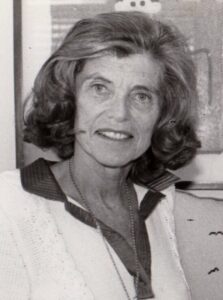
Acting on her vision, she hosted a summer day camp for young people with ID in her own backyard. She wanted to highlight what these children could do in sports and other activities—and not dwell on any limitations. She continued to build on this goal throughout the 1960s and was the main force behind President John F. Kennedy’s White House panel on people with ID. Her insight and persistence for justice grew into the Special Olympics movement, which was officially incorporated in 1968.
About 1,000 athletes with ID from the U.S. and Canada competed in the first Special Olympics International Summer Games in Chicago. A total of over 200 events were offered, including broad jump, softball throw, 25-yard swim, 100-yard swim, high jump, 50-yard dash, water polo and floor hockey. It was such a success that Shriver vowed to spearhead the Games again in 1970 and every two years thereafter in a “Biennial International Special Olympics.” Today, the mission of Special Olympics is to “provide year-round sports training and athletic competition in a variety of Olympic-type sports for children and adults with intellectual disabilities, giving them continuing opportunities to develop physical fitness, demonstrate courage, experience joy and participate in a sharing of gifts, skills and friendship with their families, other Special Olympics athletes and the community.”
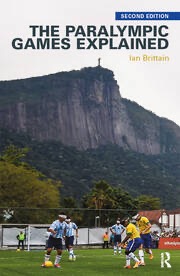 After learning about the similarities and differences between these two competitive events, it is helpful to read more about specific aspects and their impact. For more history on the Paralympics, check out the following two books, both by Ian Brittain, an Associate Professor in the Centre for Business in Society at Coventry Business School, as well as an internationally recognized expert in the study of disability and Paralympic sport. The Paralympic Games explained is an introduction to the Paralympic phenomenon, exploring key aspects and issues, from the history and development of the Paralympic movement to the economic and social impact of the contemporary Games. From Stoke Mandeville to Sochi: a history of the summer and winter paralympic games is a guidebook of facts, figures, and stories that have occurred in the development of the Games; from their roots at Stoke Mandeville hospital in the United Kingdom to the global mega-event with close links to the Olympic Games that they have become today.
After learning about the similarities and differences between these two competitive events, it is helpful to read more about specific aspects and their impact. For more history on the Paralympics, check out the following two books, both by Ian Brittain, an Associate Professor in the Centre for Business in Society at Coventry Business School, as well as an internationally recognized expert in the study of disability and Paralympic sport. The Paralympic Games explained is an introduction to the Paralympic phenomenon, exploring key aspects and issues, from the history and development of the Paralympic movement to the economic and social impact of the contemporary Games. From Stoke Mandeville to Sochi: a history of the summer and winter paralympic games is a guidebook of facts, figures, and stories that have occurred in the development of the Games; from their roots at Stoke Mandeville hospital in the United Kingdom to the global mega-event with close links to the Olympic Games that they have become today.
Wonder how the media portrays Paralympic athletes and events? Disability, the Media and the Paralympic Games by Carolyn Jackson-Brown focuses on the coverage of the London 2012 Paralympic Games by the UK’s publicly owned but commercially funded Channel 4 network, shedding important new light on our understanding of media production and its complex interactions with sport and wider society. A similar book on the Special Olympics is Intellectual Disability and Stigma: Stepping Out from the Margins by Katrina Scior and Shirli Werner, examining how intellectual disability is affected by stigma and how this stigma has developed, providing a framework for tackling intellectual disability stigma in institutional processes, media representations and other, less overt, settings.
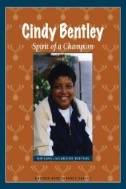
For more history on the Special Olympics, try A new kind of joy: the story of the Special Olympics by James Haskins, who was born in segregated Demopolis, Alabama and later became a Harlem public school special education teacher. This inspiring book tells the story of the many people who have made the Special Olympics a success, including tales and examples of those who have competed. Another real-life success story is Cindy Bentley: spirit of a champion by Bob Kann and Caroline Hoffman, which chronicles the life of Cindy Bentley, who was born with an intellectual disability as the result of fetal alcohol syndrome. But with the encouragement of a teacher, she realized she had a deep passion for sports—and the discipline to train and compete. So, she began participating in the Special Olympics, earning medals in tennis, track and field, and even snowshoeing. Chosen as a Global Messenger for the Special Olympics International in 2000, she has dined at the White House with two different American presidents, traveled around the world, and given speeches in front of thousands of people.
Resources from Rutgers University Libraries
Rutgers Libraries features many more books on these two events, including:
Paralympics
The Olympic Movement: Sport, Global Politics and Identity – a collection of digitized primary sources covering the history of the modern Olympic and Paralympic games, from the first modern Olympic Games in 1896 to the 1992 Summer Olympics and Paralympics held in Barcelona, Spain.
Athlete first: a history of the paralympic movement, by Steve Bailey – provides a history and analysis of the Paralympic Movement, including the development and organization of the International Paralympic Committee. It also examines the position of sport and international competition for people with a disability within their changing historical context and in relation to the Olympic Movement and able-bodied sport.
Managing the Paralympics, edited by Simon Darcy, Stephen Frawley, Daryl Adair – critically examines the planning, management, and operations of the Paralympics and how the Games are essentially different from the Olympics and what this means for their management.
 Paralympic sports events, by Robin Johnson – geared for juvenile readers, this book examines the five Paralympic winter sports – alpine skiing, cross-country skiing, biathlon, ice sled hockey, and wheelchair curling – and the athletes who compete in them.
Paralympic sports events, by Robin Johnson – geared for juvenile readers, this book examines the five Paralympic winter sports – alpine skiing, cross-country skiing, biathlon, ice sled hockey, and wheelchair curling – and the athletes who compete in them.
Special Olympics
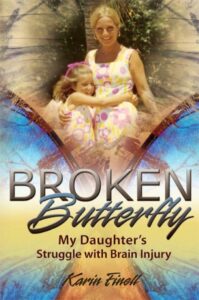
Broken butterfly: my daughter’s struggle with brain injury, by Karin Finell – recounts the struggles faced by both the author and her daughter after the little girl suffered brain damage due to the swelling of her brain from encephalitis, as well as the small victories won over the ensuing years, including participation in the Special Olympics.
Special Olympics instructional manual … from beginners to champions, [by] Julian U. Stein [and] Lowell A. Klappholz – Commissioned by the Joseph P. Kennedy, Jr. Foundation, this is a handbook for volunteers who want to organize games, team sports, and recreation for special children on a year-round basis.
Sport, coaching, and intellectual disability, edited by David Hassan, Sandra Dowling, and Roy McConkey – aims to improve the understanding and professional skills of coaches, teachers, practitioners and researchers, to promote awareness of successful programs addressing the needs of such young people, and to challenge the prevailing myths and stereotypes surrounding their abilities.
Related posts